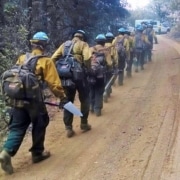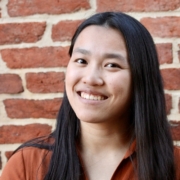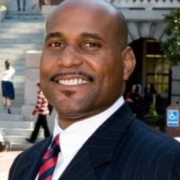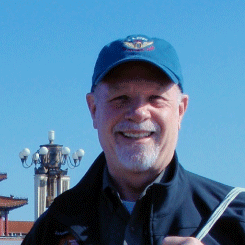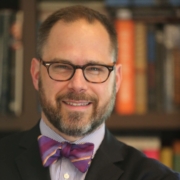California Conservation Corps Crews thin forest in bid to protect Jack London State Historic Park’s oaks

Article, written by Eloisa Ruano Gonzalez, appears in The Press Democrat. Published August 26, 2014.
To protect the majestic centuries-old oaks at Jack London State Historic Park, state workers have this week begun cutting down invasive vegetation and bay laurel trees known to harbor sudden oak death, which has killed millions of oaks and tanoaks throughout Northern California.
As oak trees have died and toppled from the disease, canopy openings have widened at the park in Glen Ellen. That has let more light seep through some areas of the forest, fueling the growth of dense and more flammable plants, according to environmental officials.
Chainsaws and shears in hand, nearly a dozen workers with the California Conservation Corps made their way Tuesday up a section of the park near the Wolf House ruins to tear out broom and other brush that could act as “ladders,” allowing flames to climb onto tree canopies during a fire. They navigated their way around dead oak trees and poison oak to get to young bay laurels that threaten tanoaks and black and coast live oaks, which are more “vulnerable” to sudden oak death, according to Cyndy Shafer, a senior environmental scientist with California State Parks.
“We’re definitely not removing all of the bay trees. It’s very targeted and strategic,” Shafer said about the $150,000 project, funded by the state and aimed at reducing the fire risk and spread of the disease in the oak-dominated section of the forest.
“It’ll make it less inviting for sudden oak death,” she added. “(But) we will not be removing any mature, healthy trees.”
The disease is caused by a fungus-like organism called Phytophthora ramorum, which is believed to be related to the microbe thought to be responsible for the Irish potato famine, and was discovered in Marin County in 1995.
It’s killed more than 3 million tanoak and oak trees throughout 15 coastal counties from Monterey to Humboldt, according to UC Berkeley’s Forest Pathology Laboratory.
It’s infected more than 105,000 acres in Sonoma County.
Combing through the state park, Shafer pointed to black and brown spots on a bay tree, evidence it was carrying the disease. Although it doesn’t kill bay trees, she said, sudden oak death easily can spread via water to nearby oaks — some of which are hundreds of years old and beloved by the community.
“Everybody understands that bay laurels are major carriers and they’re threatening the oak trees,” said Tjiska Van Wyk, executive director of Jack London Park Partners, which operates the state-owned park.
“The project is protecting the oaks for future generations,” she added. “We have a lot of those (old) guys here.”
Park visitors were upset over plans last year to remove a celebrated oak that stands outside Jack London’s cottage. Arborists had determined it was infected with a pathogenic fungi and dying, though it was determined not to be afflicted with sudden oak death. The tree, more than 300 years old, was spared after additional testing revealed it did have significant decay but was healthier than first believed.
Daniel White, a Corps employee supervising the crew, grew up climbing oak trees in the Napa area. It’s an experience he wants his son and future grandchildren to have.
“It’ll be nice to see future generations have the same opportunity we had,” White said as he watched crew member Durantae Johnson saw through a large dead oak that already had fallen over — likely a victim of sudden oak death.
“I’ve never seen oak trees this big before,” said Johnson, of Vallejo. “It feels good to help the area.”
Johnson and the rest of the crew will work for the next five to six weeks until the rain kicks in.
They plan to cut down the limbs and brush and press them down into the earth to decompose instead of hauling them off and risk spreading sudden oak death elsewhere, Shafer said.
Ted Swiecki, a plant pathologist and co-owner of Phytosphere Research, which was hired to look for ways to reduce the fire hazard and impact of sudden oak death, said the drought has slowed down the spread of the disease because a lack of rainfall to carry it. He said it’s important they get ahead of the problem to preserve oaks.
“An oak-dominated woodland is a pretty low fire hazard,” he said, adding, “It’s a proactive approach. What we’re trying to do is maintain a desirable native stand there.”









